Charles M. Kozierok The TCP-IP Guide
Подождите немного. Документ загружается.


The TCP/IP Guide - Version 3.0 (Contents) ` 501 _ © 2001-2005 Charles M. Kozierok. All Rights Reserved.
IPv6 Datagram Extension Headers
After the mandatory “main” header in an IPv6 datagram, one or more extension headers
may appear before the encapsulated payload. These headers were created in an attempt to
provide both flexibility and efficiency in the creation of IPv6 datagrams. All fields that are
needed only for special purposes are put into extension headers and placed in the
datagram when needed. This allows the size of the main datagram header to be made
small and streamlined, containing only those fields that really must be present all the time.
There is often confusion regarding the role of extension headers, especially compared to
datagram options. The IPv4 datagram had only one header, but it included a provision for
options, and IPv6 also has options, so why bother with extension headers? Good question.
It would have been possible to do everything using options. However, it was deemed a
better design to employ extension headers for certain sets of information that are needed
for common functions such as fragmenting. Options are indeed still supported in IPv6; they
are used to provide even more flexibility by providing variable-length fields that can be used
for any purpose. They are themselves defined using extension headers as we will see
below (and in their own topic, which follows.)
When extension headers are included in an IPv6 datagram, they appear one after the other
following the main header. Each extension header type has its own internal structure of
fields.
IPv6 Header Chaining Using the Next Header Field
The only field common to all extension header types is the Next Header field (which actually
appears at the end of one header type, the ESP header). The 8-bit Next Header field is
used to logically link all the headers in an IPv6 datagram as follows:
☯ The Next Header field in the main header contains a reference number for the first
extension header type.
☯ The Next Header field in the first extension header contains the number of the second
extension header type, if there is a second one. If there's a third, the second header's
Next Header points to it, and so on.
☯ The Next Header field of the last extension header contains the protocol number of the
encapsulated higher-layer protocol. In essence, this field points to the “next header”
within the payload itself.
For example, suppose a datagram that encapsulates TCP has a Hop-By-Hop Options
extension header and a Fragment extension header. Then, the Next Header fields of these
headers would contain the following values:
☯ The main header would have a Next Header value of 0, indicating the Hop-By-Hop
Options header.
☯ The Hop-By-Hop Options header would have a Next Header value of 44 (decimal), the
value for the Fragment extension header.
☯ The Fragment header would have a Next Header value of 6.
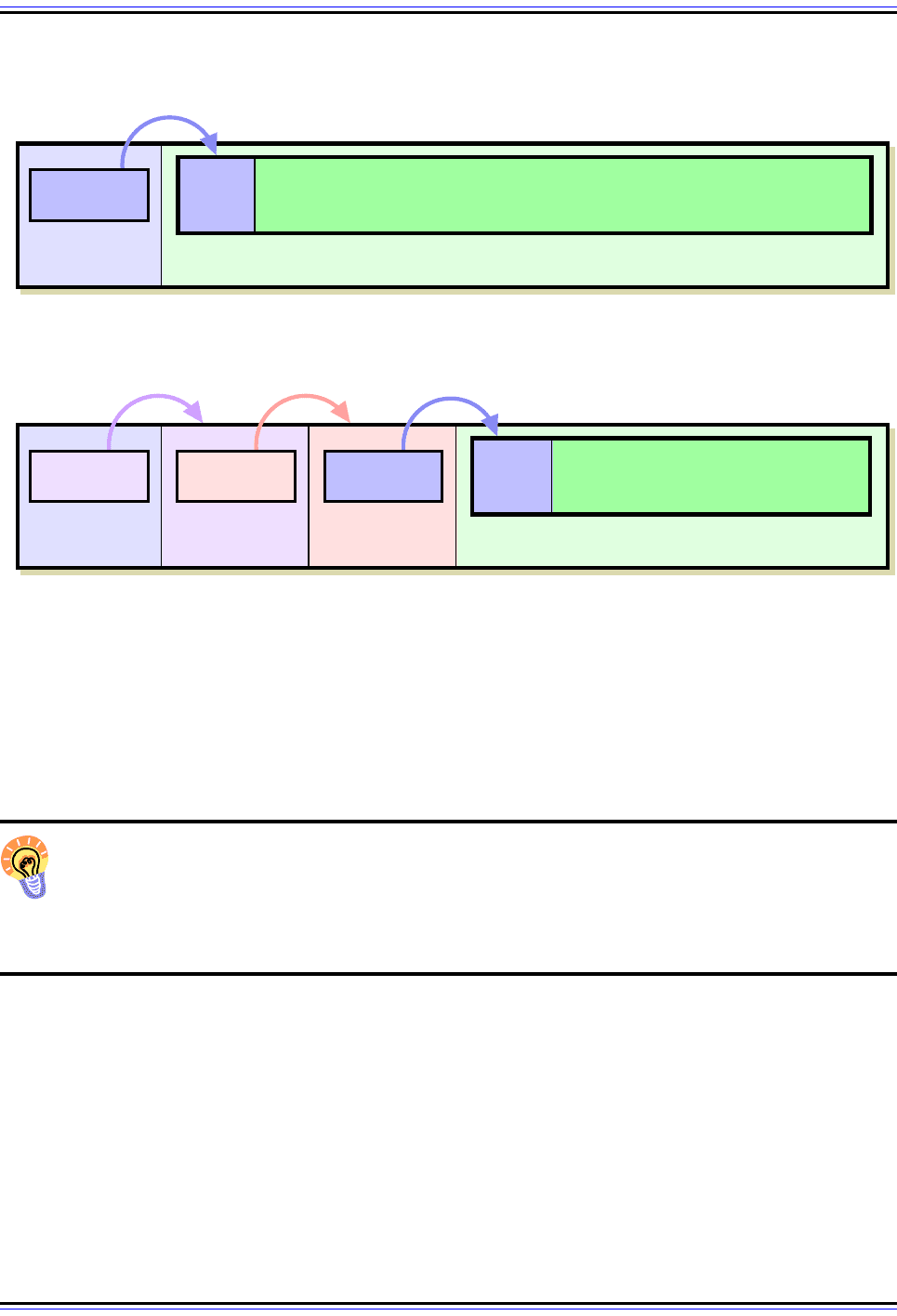
The TCP/IP Guide - Version 3.0 (Contents) ` 502 _ © 2001-2005 Charles M. Kozierok. All Rights Reserved.
This is illustrated in Figure 106.
Key Concept: The IPv6 Next Header field is used to “chain together” the headers in
an IPv6 datagram. The Next Header field in the main header contains the number of
the first extension header; its Next Header contains the number of the second, and
so forth. The last header in the datagram contains the number of the encapsulated protocol
that begins the Data field.
Figure 106: IPv6 Extension Header Linking Using the Next Header Field
The Next Header field allows a device to more easily process the headers in a received IPv6 datagram. When
a datagram has no extension headers, the “next header” is actually the header at the start of the IP Data field,
in this case a TCP header with a value of 6. This is the same way the Protocol field is used in IPv4. When
extension headers do appear, the Next Header value of each header contains a number indicating the type of
the following header in the datagram, so they logically “chain together” the headers, as shown above.
IP Header
Hop-by-Hop
Options Header
Fragment
Header
IP Data
TCP
Header
TCP Segment Data
IP Header IP Data
TCP
Header
TCP Segment Data
IPv6 Datagram With No Extension Headers Carrying TCP Segment
IPv6 Datagram With Two Extension Headers Carrying TCP Segment
Next Header
0
Next Header
44
Next Header
6
Next Header
6

The TCP/IP Guide - Version 3.0 (Contents) ` 503 _ © 2001-2005 Charles M. Kozierok. All Rights Reserved.
Summary of IPv6 Extension Headers
Table 71 lists the different extension headers, showing its Next Header value, length and
defining RFC, and providing a brief description of how each is used.
Table 71: IPv6 Extension Headers
Next
Header
Value
(decimal)
Extension
Header Name
Length
(bytes)
Description
Defining
RFC
0
Hop-By-Hop
Options
Variable
Defines an arbitrary set of options that are
intended to be examined by all devices on the path
from the source to destination device(s).
This is one of two extension headers used to
define variable-format options.
2460
43 Routing Variable
Defines a method for allowing a source device to
specify the route for a datagram. This header type
actually allows the definition of multiple routing
types. The IPv6 standard defines the Type 0
Routing extension header, which is equivalent to
the “loose” source routing option in IPv4 and used
in a similar way.
See below for the format of this extension header.
2460
44 Fragment 8
When a datagram contains only a fragment of the
original message, this extension header is
included. It contains the Fragment Offset, Identifi-
cation and More Fragment fields that were
removed from the main header.
See below for the format of this extension header,
and the topic on fragmentation and reassembly for
details on how the fields are used.
2460
50
Encapsulating
Security
Payload (ESP)
Variable
Carries encrypted data for secure communica-
tions. This header is described in detail in the
section on IPSec.
2406
51
Authentication
Header (AH)
Variable
Contains information used to verify the authenticity
of encrypted data. This header is described in
detail in the section on IPSec.
2402
60
Destination
Options
Variable
Defines an arbitrary set of options that are
intended to be examined only by the destination(s)
of the datagram.
This is one of two extension headers used to
define variable-format options.
2460
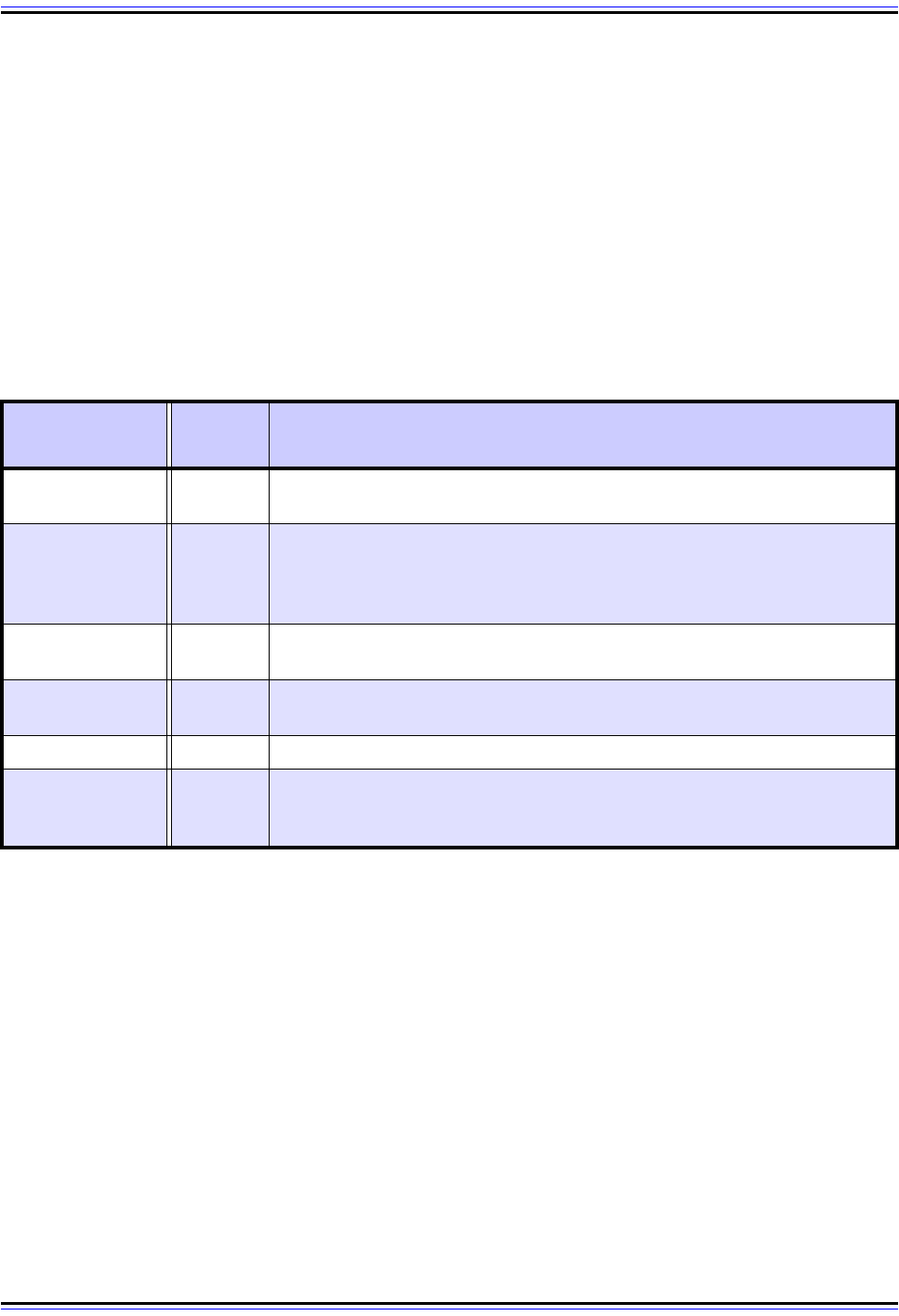
The TCP/IP Guide - Version 3.0 (Contents) ` 504 _ © 2001-2005 Charles M. Kozierok. All Rights Reserved.
Note that the Next Header value of the IPv6 main header is 41; that of an IPv4 header is 4
(its protocol number). Note that there is also a “dummy” extension header called No Next
Header that has a value of 59. This is a placeholder that when found in the Next Header
field indicates that there is nothing after that extension header.
As I mentioned in the table, the formats for several of the headers are provided in other
topics. Two of them I will describe here, however.
IPv6 Routing Extension Header
The Routing extension header is used to perform source routing in IPv6. It is described in
Table 72, and illustrated in Figure 107.
Table 72: IPv6 Routing Extension Header Format
Field Name
Size
(bytes)
Description
Next Header 1
Next Header: Contains the protocol number of the next header after the
Routing header. Used to link headers together as described above.
Hdr Ext Len 1
Header Extension Length: The length of the Routing header in 8-byte
units, not including the first 8 bytes of the header. For a Routing Type of 0,
this value is thus two times the number addresses embedded in the
header.
Routing Type 1
Routing Type: This field allows multiple routing types to be defined; at
present, the only value used is 0.
Segments Left 1
Segments Left: Specifies the number of explicitly-named nodes remaining
in the route until the destination.
Reserved 4 Reserved: Not used; set to zeroes.
Address1 …
AddressN
Variable
(multiple
of 16)
Addresses: A set of IPv6 addresses that specify the route to be used.
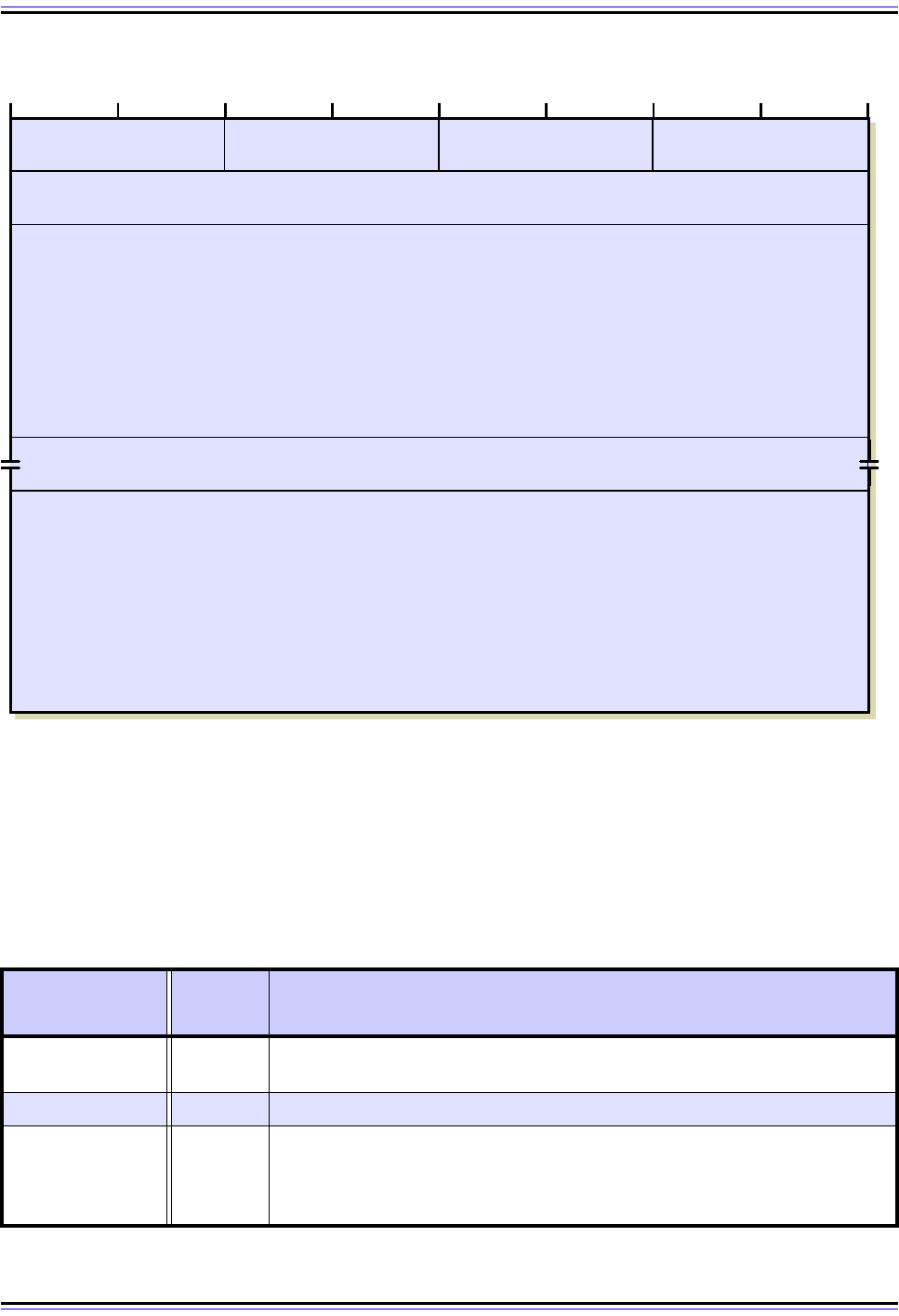
The TCP/IP Guide - Version 3.0 (Contents) ` 505 _ © 2001-2005 Charles M. Kozierok. All Rights Reserved.
IPv6 Fragment Extension Header
The Fragment extension header is included in fragmented datagrams to provide the infor-
mation necessary to allow the fragments to be reassembled. Its format can be found in
Table 73 and Figure 108.
Figure 107: IPv6 Routing Extension Header Format
Table 73: IPv6 Fragment Extension Header Format (Page 1 of 2)
Field Name
Size
(bytes)
Description
Next Header 1
Next Header: Contains the protocol number of the next header after the
Fragment header. Used to link headers together as described above.
Reserved 1 Reserved: Not used; set to zeroes.
Fragment Offset
13/8 (13
bits)
Fragment Offset: Specifies the offset, or position, in the overall message
where the data in this fragment goes. It is specified in units of 8 bytes (64
bits) and used in a manner very similar to the field of the same name in the
IPv4 header.
Next Header
Header Extension
Length
Routing Type (=0) Segments Left
Reserved
Address1
(128 bits)
AddressN
(128 bits)
4 8 12 16 20 24 28 320
...
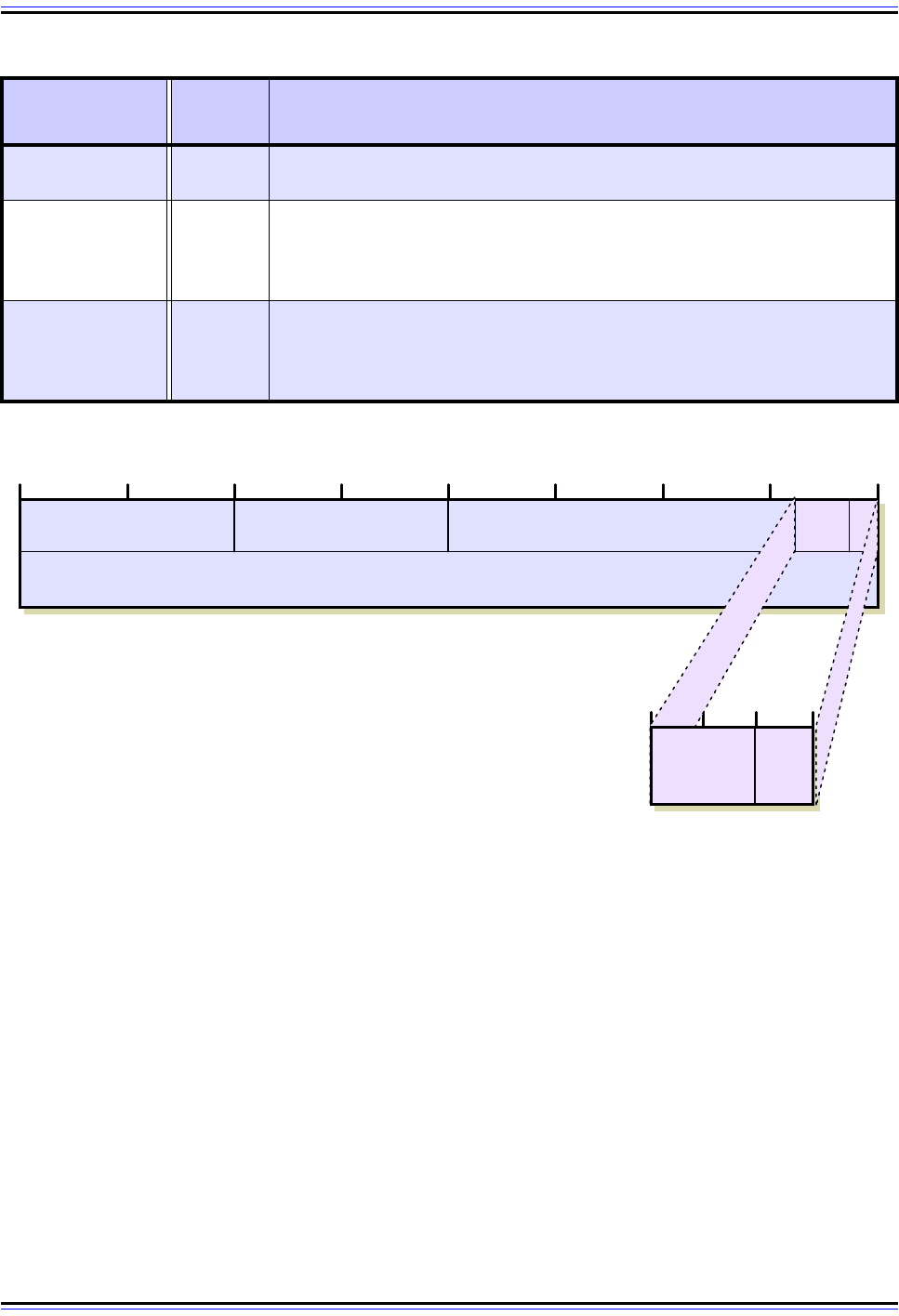
The TCP/IP Guide - Version 3.0 (Contents) ` 506 _ © 2001-2005 Charles M. Kozierok. All Rights Reserved.
IPv6 Extension Header Order
Each extension header appears only once in any datagram (with one exception; see
below). Also, extension headers are only examined by the final recipients of the datagram,
not intermediate devices (again with one exception, which we will get to momentarily). RFC
2460 specifies that when multiple headers appear, they should be in the following order
after the main header and before the higher-layer encapsulated header in the IPv6
datagram payload:
1. Hop-By-Hop Options
2. Destination Options (for options to be processed by the destination as well as devices
specified in a Routing header)
3. Routing
4. Fragmentation
Res
1/4 (2
bits)
Reserved: Not used; set to zeroes.
M Flag 1/8 (1 bit)
More Fragments Flag: Same as the flag of the same name in the IPv4
header—when set to 0, indicates the last fragment in a message; when set
to 1, indicates that more fragments are yet to come in the fragmented
message.
Identification 4
Identification: Same as the field of the same name in the IPv4 header, but
expanded to 32 bits. It contains a specific value that is common to each of
the fragments belonging to a particular message, to ensure that pieces
from different fragmented messages are not mixed together.
Figure 108: IPv6 Fragment Extension Header Format
Table 73: IPv6 Fragment Extension Header Format (Page 2 of 2)
Field Name
Size
(bytes)
Description
Next Header Reserved Fragment Offset Res
Identification
4 8 12 16 20 24 28 320
0 123
M
Reserved
More
Frag-
ments
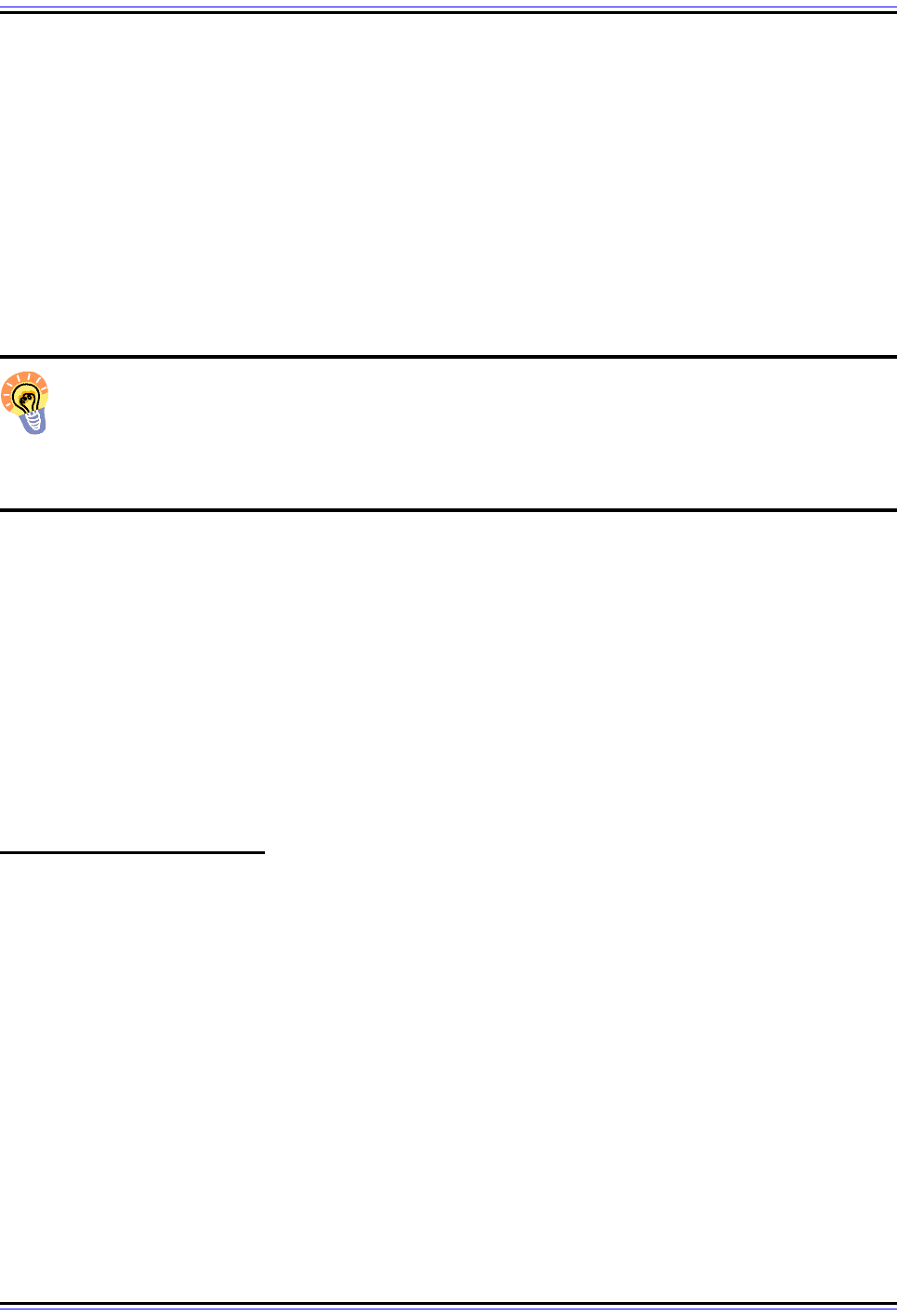
The TCP/IP Guide - Version 3.0 (Contents) ` 507 _ © 2001-2005 Charles M. Kozierok. All Rights Reserved.
5. Authentication Header
6. Encapsulating Security Payload
7. Destination Options (for options processed only by the final destination)
Now let's look at those exceptions. The only header that can appear twice is Destination
Options. Normally, it appears as the last header. However, a Destination Options header
may exist that contain options that must be examined by a list of devices specified in a
source route, in addition to the destination. In this case, the Destination Options header for
these options is placed before the Routing header. A second such header containing
options only for the final destination may also appear.
Key Concept: Each extension header may appear only once in an IPv6 datagram,
and they must appear in a fixed order. The exception is the Destination Options
header, which may appear twice; near the start of the datagram for options to be
processed by devices en route to the destination, and at the end of the extension headers
for options intended only for the final destination.
The only header normally examined by all intermediate devices is the Hop-By-Hop Options
extension header. It is used specifically to convey management information to all routers in
a route. The Hop-By-Hop Options extension header must appear as the first extension
header if present. Since it is the only one that must be read by every router (which repre-
sents a performance drain on routers) it is given “top billing” to make it easier and faster to
find and process.
Finally, note that all extension headers must be a multiple of 8 bytes in length for alignment
purposes. Also, remember that the Next Header value for a particular extension header
appears in the Next Header field of the preceding header, not the header itself.
IPv6 Datagram Options
In IPv4, all “extra” information required for various purposes is placed into the datagram in
the form of options that appear in the IPv4 header. In IPv6, the new concept of extension
headers is introduced; these headers take the place of many of the predefined IPv4
options. However, the concept of options is still maintained in IPv6, for a slightly different
purpose. Options allow the IPv6 datagram to be supplemented with arbitrary sets of infor-
mation that aren't defined in the regular extension headers. They provide maximum
flexibility, allowing the basic IPv6 protocol to be extended in ways the designers never antic-
ipated, with the goal of reducing the chances of the protocol becoming obsolete.
IPv6 Option Extension Header Types
I said that IPv6 options supplement extension headers; in fact, they are actually imple-
mented as extension headers. There are two different ones used to encode options. These
two headers only differ in terms of how the options they contain are to be processed by
devices; otherwise, they are formatted the same and used in the same way.
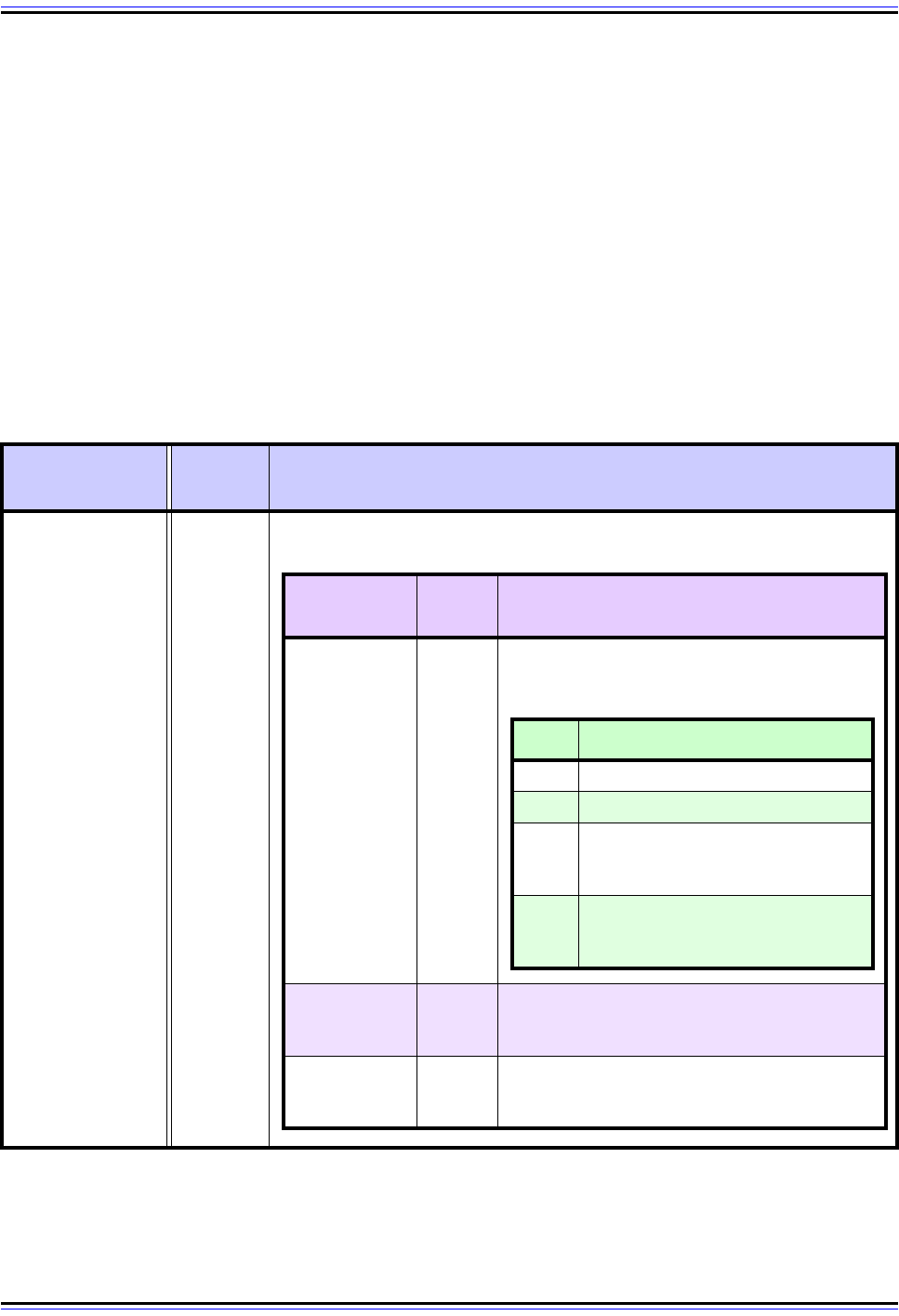
The TCP/IP Guide - Version 3.0 (Contents) ` 508 _ © 2001-2005 Charles M. Kozierok. All Rights Reserved.
The two extension header types are:
☯ Destination Options: Contains options that are intended only for the ultimate desti-
nation of the datagram (and perhaps a set of routers specified in a Routing header, if
present).
☯ Hop-By-Hop Options: Contains options that carry information for every device
(router) between the source and destination
IPv6 Option Format
Each of these header types has a one-byte Next Header field, and a one-byte Header
Extension Length field that indicates the header’s overall length. The rest of the header has
one or more option fields. Figure 109 illustrates the overall format of these two headers.
The format of each option is similar to that of IPv4 options, and is shown in Table 74.
Table 74: IPv6 Option Format (Page 1 of 2)
Subfield Name
Size
(bytes)
Description
Option Type 1
O
p
ti
on
T
ype:
Thi
s
fi
e
ld
i
n
di
ca
t
es
th
e
t
ype o
f
op
ti
on.
Th
e
bit
s are
i
n
t
erpre
t
e
d
according to the following “sub-subfield” structure:
Sub-Subfield
Name
Size
(bytes)
Description
Unrecognized
Option Action
2/8
(2 bits)
Option
Change
Allowed Flag
1/8
(1 bit)
Set to 1 if the Option Data can change while the
datagram is en route, or left at 0 if it cannot.
Remainder of
Option Type
5/8
(5 bits)
Five remaining bits that allow the specification of
32 different combinations for each combination of
the three bits above.
Th
e
fi
rs
t
t
wo
bit
s spec
if
y w
h
a
t
ac
ti
on s
h
ou
ld
b
e
taken if the device processing the option doesn't
recognize the Option Type. The four values are:
Value Action on Unrecognized Option
00 Skip option; process rest of header.
01 Discard datagram; do nothing else.
10
Discard datagram and send an ICMP
Parameter Problem message with
code 2 back to the datagram source.
11
Discard datagram and send the
above ICMP message, only if desti-
nation was not a multicast address.
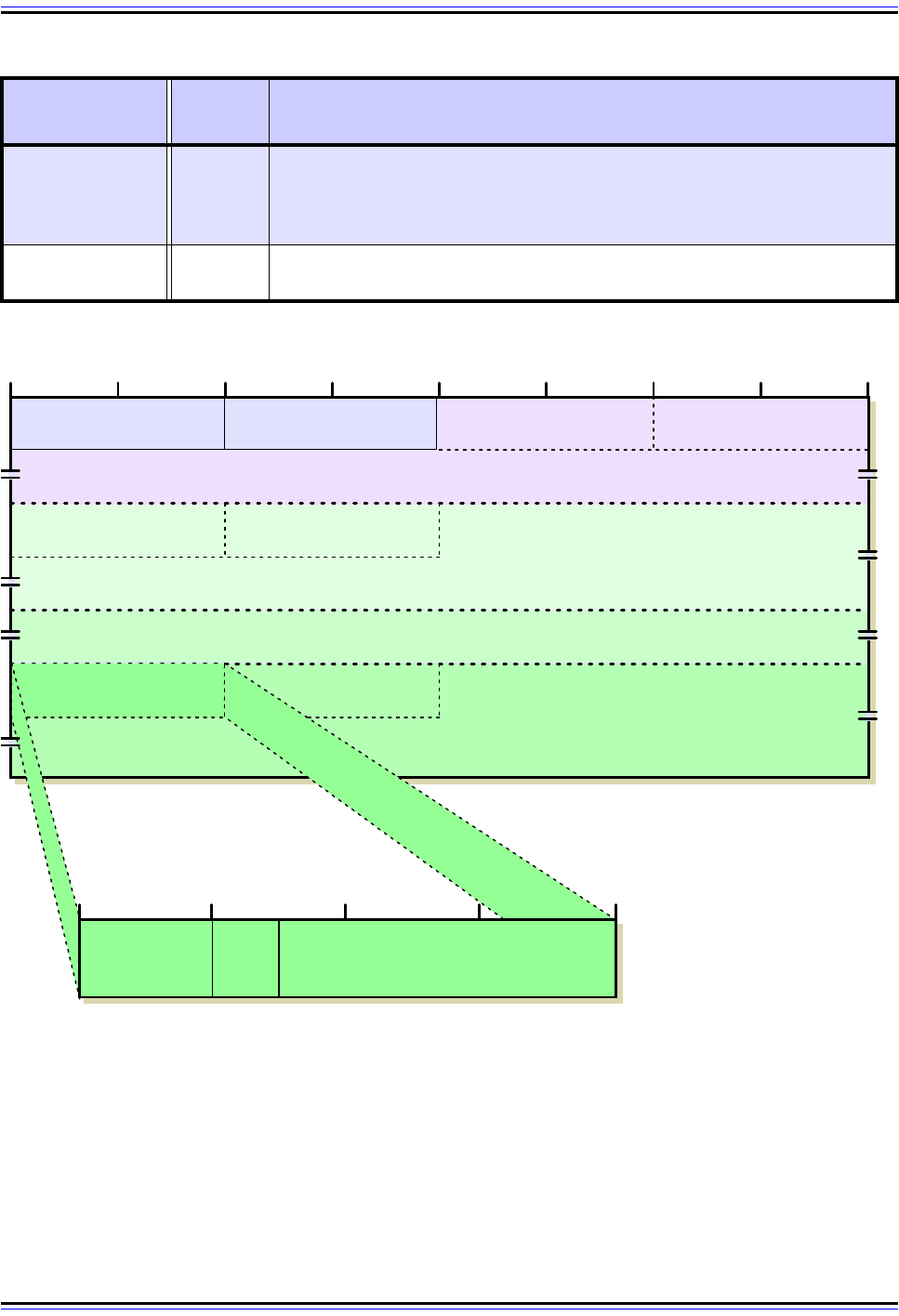
The TCP/IP Guide - Version 3.0 (Contents) ` 509 _ © 2001-2005 Charles M. Kozierok. All Rights Reserved.
Opt Data Len 1
Option Data Length: Specifies the length of the Option Data subfield
below. Note that this is a change in semantics from IPv4, where the length
field indicated the size of the entire option; in IPv6 the length of the Option
Type and Option Data Length fields are not included.
Option Data Variable
Option Data: The data to be sent as part of the option, which is specific to
the option type. Also sometimes referred to as the Option Value.
Figure 109: IPv6 Hop-By-Hop Options and Destination Options Header Formats
Each of these extension headers begins with two fixed fields, Next Header and Header Extension Length. The
rest of the header consists of a sequence of variable-length options. Each option has the structure shown in
Table 74, consisting of a type / length / value triplet.
Table 74: IPv6 Option Format (Page 2 of 2)
Subfield Name
Size
(bytes)
Description
4 8 12 16 20 24 28 320
Next Header
Header Extension
Length
...
Option #N Data
Option #1 Type Option #1 Data Length
Option #1 Data
Option #2 Type Option #2 Data Length
Option #2 Data
Option #N Type
240
Option #N Data Length
Unrecognized
Option Action
Option
Change
Allow ed
Remainder of Option Type
86
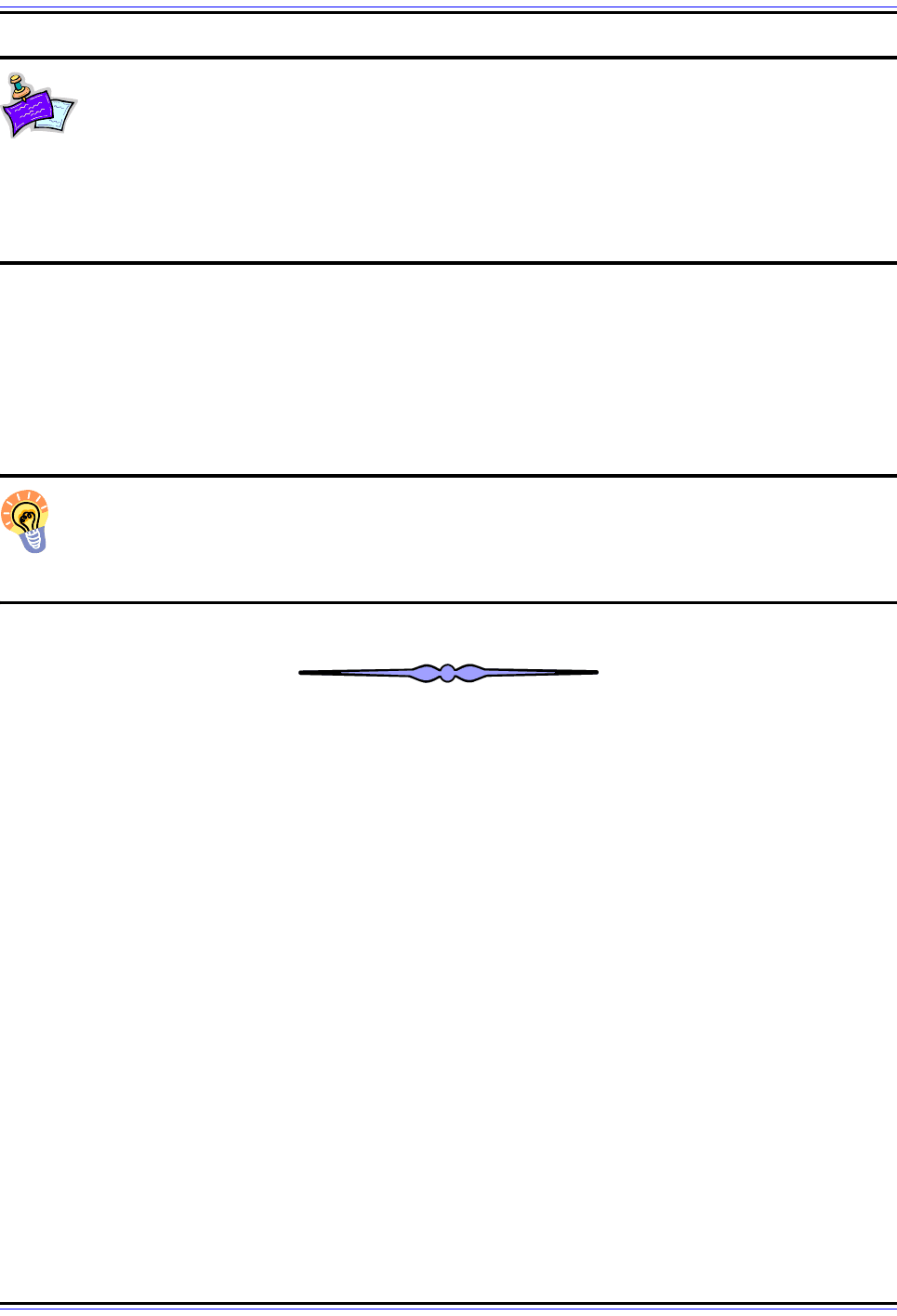
The TCP/IP Guide - Version 3.0 (Contents) ` 510 _ © 2001-2005 Charles M. Kozierok. All Rights Reserved.
Note: The Option Type subfield is a bit strange in terms of how it is interpreted.
Even though it has a substructure with three sub-subfields as shown in Table 74,
that structure is “informal”. What I mean by this is that the 8 bits of this field are
taken as a single entity. Despite the special meaning of the three highest-order bits, the
entire field is called the Option Type, not just the last five bits, and the whole is used as a
single value from 0 to 255. In fact, the “sub-subfield” names aren't even specified in the
standard; I made them up to help explain these fields.
Since each option has a subfield for type, length and value (data), they are sometimes said
to be TLV-encoded. If there are multiple options, they are placed one after each other in the
header. At the end of all the options in a Hop-By-Hop Options or Destination Options
extension header, padding may be placed to ensure that the header is a multiple of 8 bytes
in length.
Key Concept: Two IPv6 extension header types, Hop-By-Hop Options and Desti-
nation Options, are used to carry arbitrary optional information in IPv6 datagrams.
Each consists of a set of variable-length options that are defined using three
subfields indicating the option’s type, length and value.
